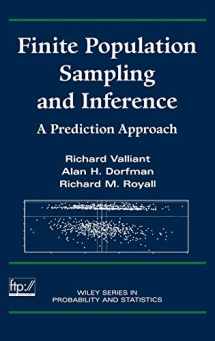
Finite Population Sampling and Inference: A Prediction Approach
Book details
Summary
Description
Complete coverage of the prediction approach to survey sampling in a single resource
Prediction theory has been extremely influential in survey sampling for nearly three decades, yet research findings on this model-based approach are scattered in disparate areas of the statistical literature. Finite Population Sampling and Inference: A Prediction Approach presents for the first time a unified treatment of sample design and estimation for finite populations from a prediction point of view, providing readers with access to a wealth of theoretical results, including many new results and, a variety of practical applications. Geared to theoretical statisticians and practitioners alike, the book discusses all topics from the ground up and clearly explains the relation of the prediction approach to the traditional design-based randomization approach. Key features include:
* Special emphasis on linking survey sampling to mainstream statistics through extensive use of general linear models
* A liberal use of simulation studies, numerical examples, and exercises illustrating theoretical results
* Numerous statistical graphics showing simulation results and properties of estimates
* A library of S-Plus computer functions plus six real populations, available via ftp
* Over 260 references to finite population sampling, linear models, and other relevant literature


We would LOVE it if you could help us and other readers by reviewing the book
Book review



